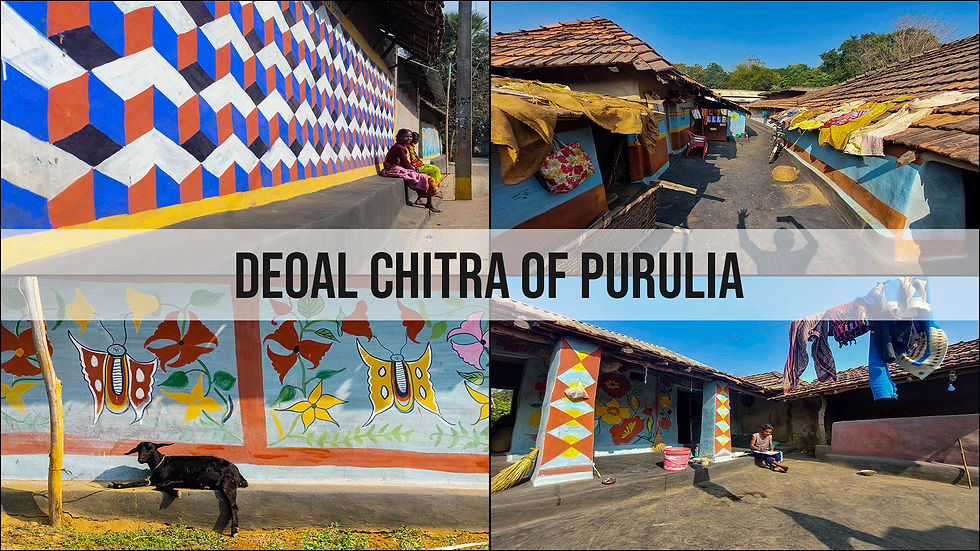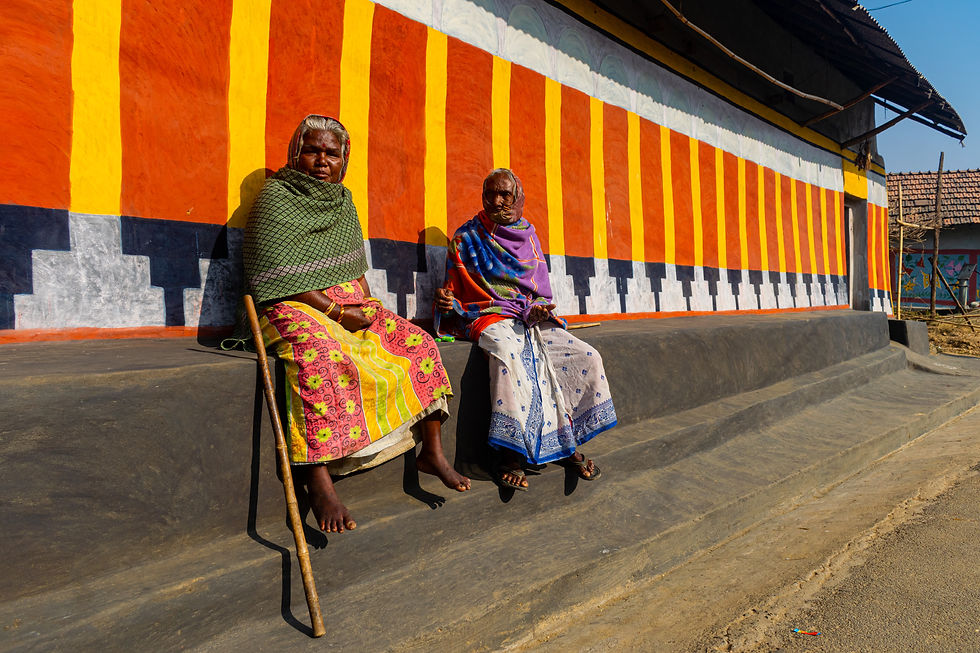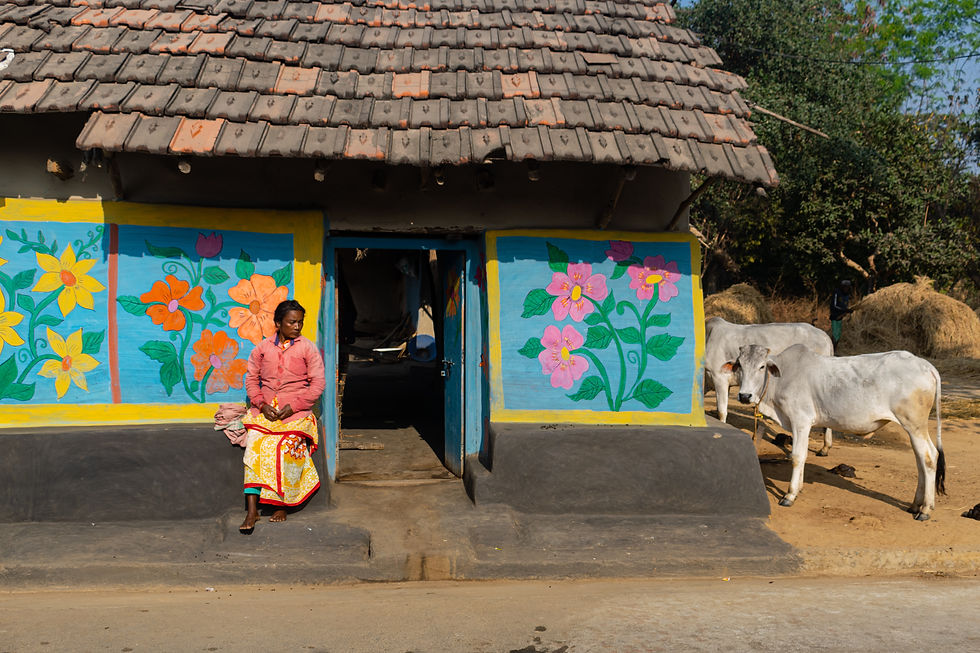DEOAL CHITRA OF PURULIA
- Ribhu Chatterjee
- Jan 28, 2023
- 1 min read
Updated: Feb 17, 2023

"Folk Art Allows Us To See
Outward From Within Things"
~ Walter Benjamin
Paintings have been an eminent form of communication among people from ancient times. From drawings on the walls of caves to murals on the church along with traditional sculpting on the temples and designs on the mosques, give us a different perspective of the artisans over time. These art forms have always been a source of history and storytelling.
Similarly, India is home to many tribal arts like Chandua Art of Odisha, Kavad of Rajasthan, Madhubani of Mithila, etc. The Deoal Chitra a.k.a Mud Wall Paintings is one such art form prevalent among the Santhal communities in the Bankura, Birbhum, and Purulia districts of Bengal. Hatimara, a small tribal village in Purulia, illuminates such artistry.
According to them, by this art form, they try to depict their connection between the environment and where they dwell. They adorn their Bakhol (house/hut) walls with natural colours from mud and daily items like rice and wheat. Some of them now use artificial colours, to give a modern touch. The brushes are made from cotton swabs and twigs from Sal trees. Generally, there is no theme for the designs, it is just regular flowers, trees, and geometric patterns. The outlines are first made on the mud walls and coated with lime and later the colours are applied to them. Often, they use fingertips to make it look more intricate.


















The way these artists try to portray their ideas is very distinct and it reflects this age-old art form. Unfortunately, many such unique art forms are gradually getting extinct as they are not well recognised yet.




Comments